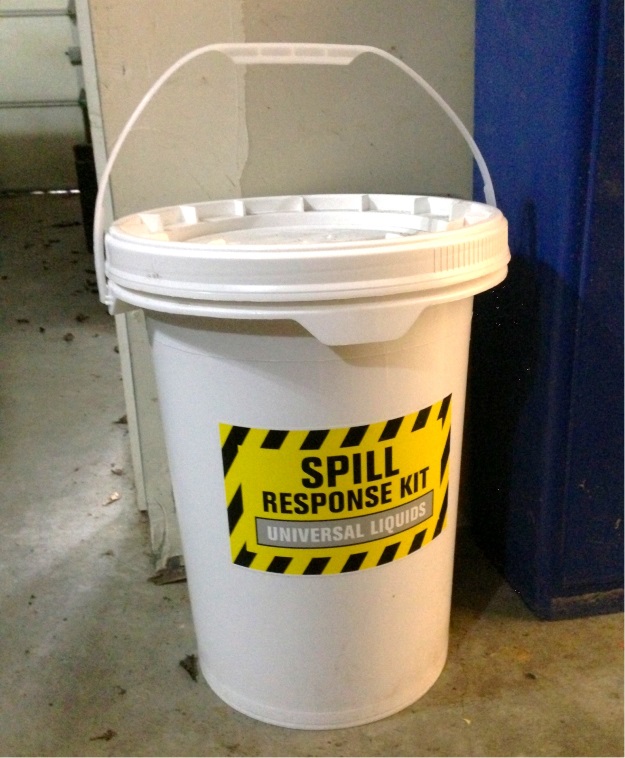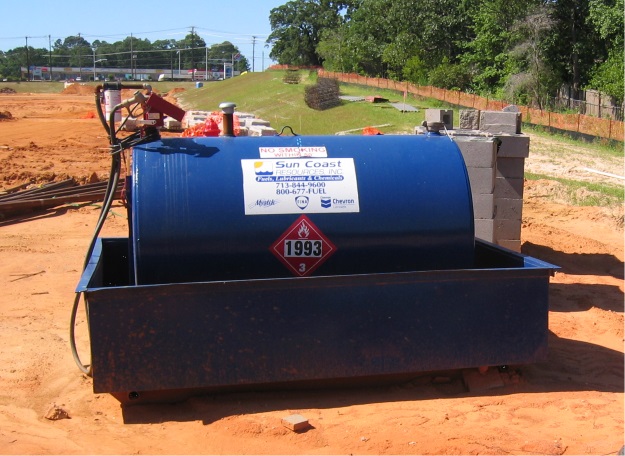Spill Prevention and Control Plan

Description
Spill Prevention and Control Plans (SPCP) should clearly state measures to stop the source of a spill, contain the spill, clean up the spill, dispose of contaminated materials, and train personnel to prevent and control future spills.
Applicability
SPCPs are applicable to construction sites where hazardous wastes are stored or used. Hazardous wastes include pesticides, paints, cleaners, petroleum products, fertilizers, and solvents.
When developing an SPCP, a construction site operator should identify potential spill or source areas, such as loading and unloading, storage, and processing areas; places where dust or particulate matter is generated; and areas designated for waste disposal. Also, evaluate spill potential for stationary facilities, including manufacturing areas, warehouses, service stations, parking lots, and access roads. Conduct this evaluation during the project planning phase, and reevaluate it during each phase of construction.
The SPCP should define material handling procedures and storage requirements and outline actions necessary to reduce spill potential and impacts on stormwater quality. This can be achieved by:
- Recycling, reclaiming, or reusing process materials, thereby reducing the amount of process materials that are brought into the facility
- Installing leak detection devices, overflow controls, and diversion berms
- Disconnecting any drains from processing areas that lead to the storm sewer
- Performing preventative maintenance on storm tanks, valves, pumps, pipes, and other equipment
- Using material transfer procedures or filling procedures for tanks and other equipment that minimize spills
- Substituting less or non-toxic materials for toxic materials
The SPCP should document the locations of spill response equipment and procedures to be used and ensure that procedures are clear and concise. The plan should include step-by-step instructions for the response to spills at a facility. In addition, the spill response plan should:
- Identify individuals responsible for implementing the plan
- Define safety measures to be taken with each kind of waste
- Specify how to notify appropriate authorities, such as police and fire departments, hospitals, or municipal sewage treatment facilities for assistance
- State procedures for containing, diverting, isolating, and cleaning up the spill
- Describe spill response equipment to be used, including safety and cleanup equipment
The plan can be a procedural handbook or a poster to be placed in several locations at the site.
Limitations
Training is necessary to ensure that all workers are knowledgeable enough to follow procedures outlined in the SPCP. Make equipment and materials for cleanup readily accessible, and mark them clearly so workers can follow procedures quickly and effectively.
Maintenance Considerations

Update the SPCP regularly to accommodate any changes in the site, procedures, or responsible staff. Conduct regular inspections in areas where spills might occur to ensure that procedures are posted and cleanup equipment is readily available.
Effectiveness
An SPCP can be highly effective at reducing the risk of surface and ground water contamination; however, to ensure that procedures are followed, a construction site operator should provide worker training, appropriate materials and equipment for cleanup, and adequate staff time.
Cost Considerations
Spill prevention and control plans can be inexpensive to implement; however, adequate time and resources are needed to properly handle and dispose of spills.
References
Spill911. No date.
Spill Containment: Oil and Sediment Curbguard. [www.spill911.com ]. Accessed November 10, 2005.
USEPA (U.S. Environmental Protection Agency). 2006.
Spill Prevention, Control and Countermeasure Guides. http://www.epa.gov/emergencies/content/spcc/index.htm. Accessed May 15, 2006.
USEPA (U.S. Environmental Protection Agency). 1992a. Stormwater Management for Construction Activities: Developing Pollution Prevention Plans and Best Management Practices. EPA 832-R-92-005. U.S. Environmental Protection Agency, Office of Water, Washington, DC.
USEPA (U.S. Environmental Protection Agency). 1992b. Stormwater Management for Industrial Activities: Developing Pollution Prevention Plans and Best Management Practices. EPA 832-R-92-006. U.S. Environmental Protection Agency, Office of Water, Washington, DC.